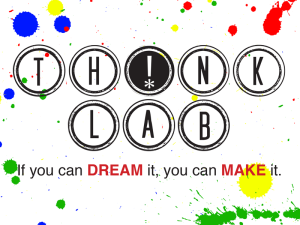It’s the ultimate combination of old and new.
Decked out in full body armor as a gladiator from the ancient Roman Empire, Senior Harry Rol clamps on his helmet and steps onto a 3-D printing scanner in the University of Mary Washington’s 21st century classroom known as the ThinkLab.
“You really look the part,” said Associate Professor of Classics Joe Romero, as Rol strikes a pose, knees bent with shield and sword at the ready.

 The innovative ThinkLab Makerspace in the Simpson Library of UMW has been featured in the latest publication from the EDUCAUSE Learning Initiative’s 7 Things series on rapid innovation. UMW is cited alongside Stanford, Rutgers, and Case Westerns among other institutions for recognizing early on the importance of makerspaces as a way to inspire self-directed and hands-on learning using emerging technologies like 3D printing, robotics, and e-textiles. DTLT and UMW’s work has been featured in past issues of the 7 Things series on a variety of topics including MOOCs, WordPress, and 3D Printing technology. The full paper can be found on the
The innovative ThinkLab Makerspace in the Simpson Library of UMW has been featured in the latest publication from the EDUCAUSE Learning Initiative’s 7 Things series on rapid innovation. UMW is cited alongside Stanford, Rutgers, and Case Westerns among other institutions for recognizing early on the importance of makerspaces as a way to inspire self-directed and hands-on learning using emerging technologies like 3D printing, robotics, and e-textiles. DTLT and UMW’s work has been featured in past issues of the 7 Things series on a variety of topics including MOOCs, WordPress, and 3D Printing technology. The full paper can be found on the